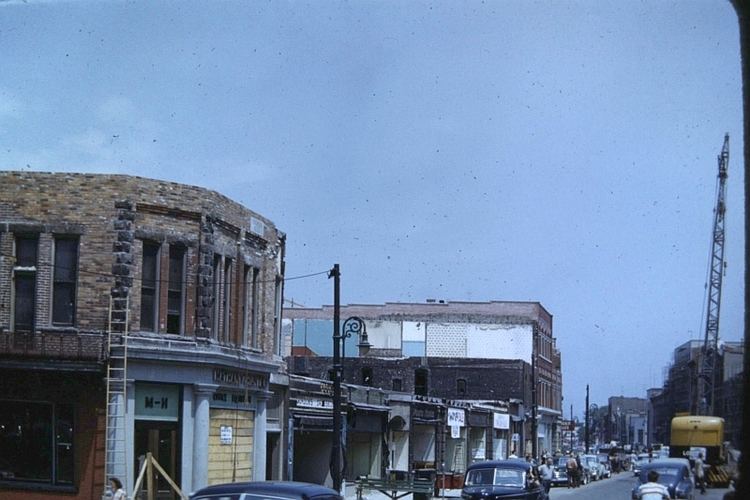Max rating | Start date May 21, 1953 | |
 | ||
Formed May 21, 1953 5:45 p.m. EDT Casualties 7 fatalities, 68+ injuries Areas affected Port Huron, Michigan, Sarnia, Ontario, and surrounding area Damage 17.6 million USD (1953 USD) | ||
A powerful tornado struck the city of Sarnia, Ontario, Canada, on the afternoon of May 21, 1953.
One of many violent tornadoes during this exceedingly active and deadly season, this tornado touched down just before 4:30 p.m. near Smiths Creek, Michigan (approximately ten miles southwest of Port Huron). It moved steadily towards the east-northeast at 35 mph (56 km/h), where it devastated the southern edge of Port Huron some twenty minutes later (Grazulis, 1990) resulting in widespread F3 and F4 damage. Two people were killed in Port Huron and twenty more were injured. Close to 400 homes were damaged or destroyed in the United States with monetary losses totaling $2.6 million (Grazulis, 1990).
Before crossing the St. Clair River into Canada, the parent thunderstorm dumped heavy amounts of rain and golfball-size hail on the city of Sarnia. This circumstance was credited with clearing the streets of motorists and pedestrians, henceforth reducing the potential number of tornado-related casualties. By 5:45 p.m., however, the tornado roared into Canada just south of Sarnia Harbour, where it intensified further and grew in size to 900 m (980 yd) across (Grazulis, 1990). Moving to the northeast, the tornado passed directly through the downtown area where nearly a hundred commercial buildings sustained damage. A four-floor hotel on the waterfront lost many of its upper floors, as was a furniture store on Christina Street. The auditorium of the Imperial Theatre completely collapsed. Nearby however, a steel-reinforced telephone exchange building received minimal damage, as a result of its sturdy construction.
At least 150 homes on the more suburban outskirts of the city were damaged and in some instances reduced to rubble. Before exiting Sarnia, the tornado curved even further to the northeast and began to weaken, as its path narrowed to approximately 30 m (33 yd) across. A radio station nearby was severely damaged by the tornado, CHOK. Both CHOK-AM (1070 kHz) and CHOK-FM (97.5 MHz) were knocked off the air; while the AM station returned to the air later that day, the FM station was never rebuilt and its licence was cancelled in 1957. CHOK would remain an AM-only station until adding an FM rebroadcaster 55 years later.
Although CHOK returned to the air within a few hours, it remained under emergency circumstances for several days, and Port Huron's two AM radio stations, WTTH and WHLS, were also off the air and had sustained even more severe damage than CHOK. In the days to come, radio stations in Detroit, Windsor, and London would aid in the relief effort by relaying messages and emergency information from CHOK to listeners around the region. Nevertheless, the work of local radio announcers such as Karl Monk at CHOK and Robin Busse at WTTH, who had kept listeners informed of the storm as it developed until their stations were knocked off the air, was credited for saving many lives.
As it moved into rural Lambton and Middlesex Counties, more F4 damage was inflicted upon farmsteads and homes near Nairn, before the tornado dissipated south of Stratford (Grazulis, 1990). This suggests a total path length exceeding 120 km (75 mi), though it is highly probable that this damage path was made up of more than one tornado, possibly as many as four. At the very least, there were two other storm tracks that day both of which paralleled the Sarnia storm to its north and south. One of these tracked from Strathroy to northeast of London whereas the other originated near Lambton Shores before weakening near St. Mary's. Significant tornado damage in the F2 to F4 range was also reported with these storms, and it is likely that these parent supercells were also of the cyclic variety. As many as nine individual tornadoes may have touched down during this outbreak. Financial losses in Canada totaled $15 million; five people were killed, 48 were injured, and 500 were left homeless.
The photo here was taken by Gordon Cooke a chemical engineer at Imperial Oil a couple of days later as the cleanup began.
